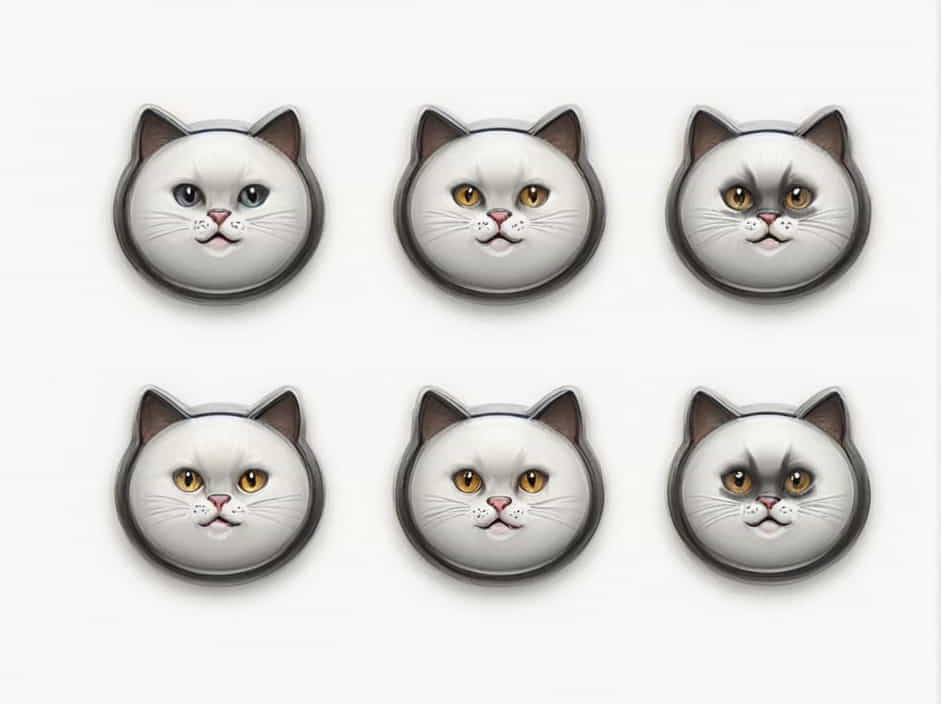If you’ve ever heard a cat making an eerie, wailing sound, you might be wondering what it is. This intense, drawn-out cry is called caterwauling. Unlike a simple meow or purr, caterwauling is a loud and unsettling noise that can catch you off guard. But why do cats caterwaul, and what does it sound like? This topic will explore the meaning behind this unique feline vocalization, its causes, and how to respond to it.
What Is Caterwauling?
Caterwauling is a high-pitched, yowling sound that cats make for various reasons. It is often long, dramatic, and sometimes repetitive. This sound can be described as a combination of a wail, a howl, and a cry. It is different from a regular meow because it tends to be more urgent and emotional.
Many cat owners compare caterwauling to a baby crying, a siren, or even a distressed scream. It can be startling, especially if you hear it in the middle of the night.
What Does a Cat Caterwaul Sound Like?
1. Loud and Piercing
Caterwauling is not a soft or gentle sound. It is usually loud and high-pitched, meant to grab attention. A cat may hold the note for several seconds before stopping or repeating it.
2. Long and Drawn-Out
Unlike a quick meow, a caterwaul is stretched out and filled with emotion. It often sounds like a long “Aaaaoooowww” or “Raaaoooww” that rises and falls in tone.
3. Repetitive and Urgent
Cats that caterwaul often do it in a repeated pattern. This repetition makes it clear that the cat is trying to communicate something important.
4. Echoing or Vibrating
Some cats add a trilling or vibrating quality to their caterwaul, making it sound even more dramatic. This variation depends on the individual cat and its breed.
Why Do Cats Caterwaul?
There are several reasons why a cat might make this unusual sound. Understanding the cause can help you address the issue and keep your feline friend happy.
1. Mating Behavior
One of the most common reasons for caterwauling is related to mating. Unspayed female cats caterwaul when they are in heat, calling for male cats. Similarly, unneutered male cats may caterwaul when they sense a female in heat nearby. This sound is a natural part of their reproduction cycle.
Solution: Spaying or neutering your cat can reduce or eliminate this behavior.
2. Territorial Disputes
Cats are territorial animals, and caterwauling can be a way of warning other cats to stay away. If a cat sees another feline outside the window or senses an intruder nearby, it may caterwaul to defend its territory.
Solution: Close windows and blinds at night to reduce visual triggers. If the caterwauling is due to stray cats, consider humane deterrents to keep them away.
3. Pain or Illness
If your cat suddenly starts caterwauling and seems distressed, it may be in pain or discomfort. Conditions like urinary tract infections, arthritis, or even dental issues can cause a cat to vocalize more than usual.
Solution: If your cat’s caterwauling seems unusual, take it to the vet for a check-up. Sudden changes in vocalization can be a sign of health problems.
4. Hunger or Thirst
Some cats caterwaul when they want food or water. This behavior is more common in older cats who have developed a habit of demanding meals vocally.
Solution: Stick to a regular feeding schedule and ensure fresh water is always available. If your cat caterwauls excessively for food, try a slow-feeder bowl or puzzle feeder to make mealtime more engaging.
5. Loneliness or Attention-Seeking
Cats are independent animals, but they still crave social interaction. If a cat feels lonely or bored, it may caterwaul to get your attention. This is especially common in single-cat households where the cat doesn’t have a playmate.
Solution: Spend quality time with your cat every day. Interactive toys, scratching posts, and climbing trees can also help keep your cat entertained.
6. Cognitive Dysfunction in Older Cats
Senior cats sometimes experience cognitive decline, similar to dementia in humans. This condition, known as feline cognitive dysfunction, can cause confusion, anxiety, and increased vocalization, including caterwauling.
Solution: Keep your older cat comfortable with a predictable routine. Nightlights, calming music, and pheromone diffusers can help ease their anxiety. If the caterwauling becomes excessive, consult your vet for possible treatments.
7. Fear or Anxiety
A cat that feels scared or stressed may caterwaul as a way of expressing distress. Changes in the environment, such as moving to a new home, introducing a new pet, or loud noises, can trigger this behavior.
Solution: Identify the source of stress and try to remove it. Creating a safe space with a cozy bed and hiding spots can help your cat feel more secure.
How to Stop Excessive Caterwauling
While caterwauling is a natural behavior, excessive or constant caterwauling can become a problem. Here are some ways to reduce it:
- Determine the Cause – Observe your cat’s behavior and surroundings to figure out why it’s caterwauling.
- Provide Mental Stimulation – Keep your cat engaged with toys, climbing structures, and puzzle feeders.
- Ensure Proper Medical Care – If you suspect illness, visit the vet for a check-up.
- Stick to a Routine – Cats thrive on routine, so keeping a consistent schedule for meals, playtime, and bedtime can help reduce stress-related caterwauling.
- Use Calming Techniques – Try pheromone sprays, calming treats, or background music to soothe an anxious cat.
Caterwauling is one of the most distinctive sounds a cat can make. Whether it’s due to mating, pain, hunger, or loneliness, this vocalization always has a purpose. By understanding what a cat caterwaul sounds like and why it happens, you can take the right steps to respond and ensure your cat is comfortable and happy.
If your cat caterwauls frequently, pay close attention to its needs and environment. With the right approach, you can reduce unnecessary caterwauling while keeping your feline friend healthy and content.
